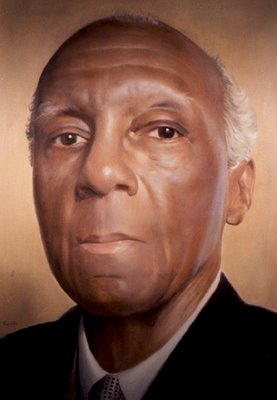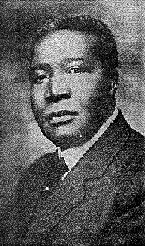While we commemorated Dr. King's Birthday on January 15th as a holiday and I enjoyed the time off; I wanted to note the Civil Rights Movement and it's history.
The struggle of Great Americans of color has been significant throughout the entire history of this country. Where America has found it's greatness throughout this struggle is maintaining the dignity of human rights.
The women and men below have found success within their lives to bring light to the hurdle that skin color has played in the social environment of the United States of America. They all have significant contributions and also interesting focus.
In labor, the minority American found strength and comfort in unions. A sense of community has been the underlying theme throughout their citizenship. Even slave communities had methods of legalizing great events such as marriage. Their dignity throughout American history has been remarkably the forefront of the Civil Rights Movement.
Dr. King knew the strength sacrifice required to move mountains and provided that through strong religious commitment. It is that character which epitomized the African American and the movement to achieve equity.
This is a simple entry today to make note of the innate character that is so typical of these citizens and how very long the struggle for equality has been a venue of American politics.
This Blog is created to stress the importance of Peace as an environmental directive. “I never give them hell. I just tell the truth and they think it’s hell.” – Harry Truman (I receive no compensation from any entry on this blog.)
Thursday, January 18, 2007
(Page down) As a Free Black, Benjamin Bannaker became acquainted with Thomas Jefferson ...

Benjamin Banneker's Almanac
On August 19, 1791, Benjamin Banneker, a free black trained as a mathematician, clockmaker, and surveyor, sent Jefferson a copy of his Almanac in an effort to change Jefferson's views on blacks' intellectual capacities that he outlined in Notes on the State of Virginia. In the accompanying letter, Banneker pleaded with Jefferson to live up to the ideals of the Declaration of Independence. Jefferson never lent the "aid and assistance" Banneker sought. The correspondence between the two was published repeatedly by Banneker and his Quaker supporters. Jefferson's political enemies used this correspondence to charge that Jefferson was a secret abolitionist.
... which resulted in Jefferson being charged as a secret abolitionist. Well, who wants that? Thomas Jefferson welcomed it. The fight for Civil Rights began long before slavery became a reason for a Civil War. The immorality of slavery took one hundred years to manifest into intolerance.


Although he spent nearly his entire life on one farm, Banneker had an important influence on how African Americans were viewed during the Federalist and Jeffersonian periods of American history. Born in Baltimore County, Maryland, Banneker was the child of a free black father. He had little formal education, but he became literate and read widely. At 21, he built a clock with every part made of wood--it ran for 40 years. After the death of his father, he lived on his father's 100-acre farm, largely secluded from the outside world, with his sisters. Self taught in the fields of astronomy and surveying, he assisted in the survey of the Federal Territory of 1791 and calculated ephemerides and made eclipse projections for Benjamin Banneker's Pennsylvania, Delaware, Maryland and Virginia Almanack and Epheremis, published during the years 1792-1797. He retired from tobacco farming to concentrate wholly upon his studies. He corresponded with Thomas Jefferson and urged Jefferson to work for the abolition of slavery.

Asa Philip Randolph (1889 - 1979)

Asa Phillip Randolph
Philip Randolph brought the gospel of trade unionism to millions of African American households. Randolph led a 10-year drive to organize the Brotherhood of Sleeping Car Porters (BSCP) and served as the organization's first president. Randolph directed the March on Washington movement to end employment discrimination in the defense industry and a national civil disobedience campaign to ban segregation in the armed forces. The nonviolent protest and mass action effort inspired the civil rights movement of the 1950s and 1960s.

Brown v. Board of Education of Topeka
Joe Biden at the Thomas Senate hearings stated, "It is so much deeper than Anita Hill or Clarence Thomas or sex harassment in and of itself,"

Anita Hill
Are you a scorned woman?" asked Senator Howell Heflin. "Do you have a martyr complex? Do you have a militant attitude relative to the area of civil rights?"
So went the senatorial quizzing of Anita Hill that riveted a nation. As she faced the Senate Judiciary Committee in their dark gray suits on that October day in 1991, Hill, a graduate of Yale Law School who had worked as an assistant to Supreme Court nominee Clarence Thomas a decade before, was struck by a peculiar thought: "I questioned my decision to wear bright blue linen."

Subscribe to:
Comments (Atom)


